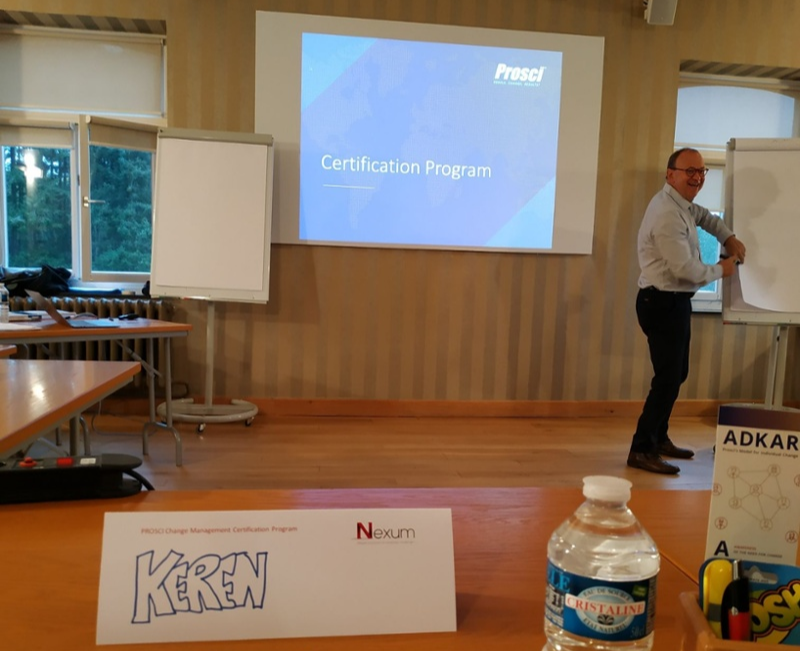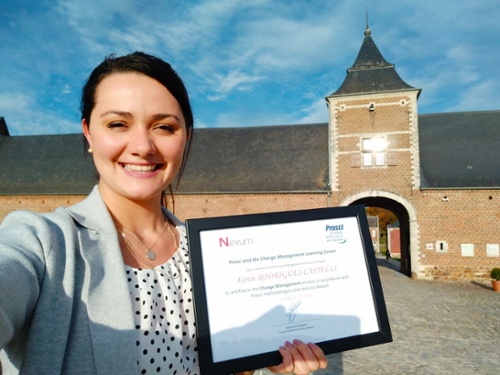In change management as in life in general, there’s only so much that you can do instinctively – even if you have pretty good instincts. At times you need a structure, a model, a guideline to help you get through situations that seem bigger than you, especially when working in change management at large enterprises like our customers. That’s what lead me to Prosci’s change practitioner certification course. I had some knowledge in change management and had already acquired some common sense throughout the years while working as a G Suite change manager. But I was lacking some ‘meat to the bone’.
In this article, I’ll share my 5 key learnings from this fantastic change management training that I highly recommend.

After the 3-day intensive certification training given by Prosci, a renowned international change management training provider, I felt like my expectations were reached. I have filled in the gaps that I had and through the process of the training I also understood why and how we failed in some of our past G Suite change projects and approaches.
Here are the 5 key learnings. I hope they will help you in your next change management project.
#1 Preparation is key
By failing to prepare, you are preparing to fail.” ― Benjamin Franklin
Everyone sort of prepares their change management approach to a certain extent: you meet with the key stakeholders, you go about the change management strategy and ideally you cover all those high level topics in a 2-hour call. Turns out that’s not enough.
Prosci’s methodology showcases that preparing the change management strategy is a crucial aspect to your change management initiative. The preparation needs to be thought through and analysed. Here are some of the recommendations about preparing your change management strategy that were shared during the course:
- Analyse the impact the change will have on the organisation
- Understand the company’s readiness to change
- Create a sponsorship overview to understand the sponsors’ buy-in throughout the company. Having a visual diagram will enable you to tackle and anticipate resistance
- The Prosci Project Change Triangle (PCT) is a tool that should be used and reviewed throughout the project to assess how well project management, change management and leadership/sponsorship are being dealt with. If one of these streams isn’t being well deployed, then the project could be at risk.

#2 The ADKAR model
For me this was the key tool learned in the training! Whether you’re going through a personal or organisational change, there are inevitably 5 steps that you have to go through to change. ADKAR stands for: AWARENESS, DESIRE, KNOWLEDGE, ABILITY and REINFORCEMENT.
This model should be approached in a linear fashion: you first have to tackle awareness. Once that’s reached, you work on the desire to change. Only once desire to change is fulfilled, you can train and work on increasing the knowledge. The ability to apply the change will then need to be assessed and addressed to be followed up by numerous reinforcements.
As research proves it: it takes 21 days of consistent effort to embrace a change into your habit.
ADKAR should be assessed several times throughout the lifespan of the change project as a check to where an individual, a group or a department stands in your change implementation.
# 3 The importance of sponsors
Everyone knows the sponsors to your projects are important and need to be kept close, but I was very surprised to learn that the main reason why change initiatives fail is because of the lack of involvement from the sponsor’s side.
Expectations should be set in the beginning as to what the sponsor’s role and activities will be. For example: the sponsor should be the one sending out business messages, as its impact will be best perceived and received by the users.
#4 Middle managers are the main resistors
This one also took me by surprise. Middle managers have difficult shoes to fill: on the one hand they are the ones responsible for passing down to their teams the communication and the desire to change. But on the other hand, they are well aware of the team’s constraint and possible reactions.
The Prosci model suggests that you pay special attention to the middle managers and provide them a coaching guide to help them become change enablers in their teams. I believe this will be key in helping us through our future change projects at Fourcast.
#5 Anticipate resistance
Resistance is to be expected: that we all know! The brain is lazy and doesn’t really want to put extra energy in doing things differently. What was new to me was that it should be anticipated.
That means that before starting the change management, the change manager and the project team should already put in place resistance management activities or buffers to help mitigate the resistance once it surfaces.
Here are some resistance management activities ideas for our G Suite projects:
- Create a listening environment or Q&A sessions to allow users to ask any questions and express concerns
- Show benefits in a real and tangible way: demo sessions could be useful for those in disbelief to showcase what it could look like to work with a new tool and technology
- Remove barriers: in our G Suite change projects that could be: making sure everyone’s computer is compatible with the tool so that G Suite runs smoothly, providing a mobile membership allowing a 4G connection so that accessibility isn’t an issue, etc.

These were my top 5 key learnings from the Prosci’s change practitioner certification course. To set your change project up for success it comes down to: giving more importance to the preparation of your change strategy, using the ADKAR model, giving importance to sponsors, paying special attention to the middle managers and anticipating resistance.
Were you aware of the five elements highlighted here?
Want to know more about Change Management?
Check out our Change Management Resources page
{{cta(‘ea69d767-29a0-47fa-8063-c0f732b7bbaa’,’justifycenter’)}}